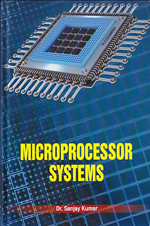Annotation
A microprocessor is a computer processor that incorporates the functions of a central processing unit on a single integrated circuit (IC), or sometimes up to 8 integrated.circuits. The microprocessor is a multipurpose, clock driven, register based, digital integrated circuit that accepts binary data as input, processes it according to instructions stored in its memory and provides results (also in binary from) as output. Microprocessors contain both combinational logic and sequential digital logic. Microprocessors operate on numbers and symbols represented in the binary number system. Microprocessors can be selected for differing applications based on their word size, which is a measure of their complexity. Longer word sizes allow each clock cycle of a processor to carry out more computation, but correspond to physically larger integrated circuit dies with higher standby and operating power consumption. 4, 8 or 12-bit processors are widely integrated into microcontrollers operating embedded systems. Where a system is expected to handle larger volumes of data or require a more flexible user interface, 16, 32 or 64-bit processors are used. An 8 or 16-bit processor may be selected over a 32-bit processor for system on a chip or microcontroller applications that require extremely low-power electronics, or are part of a mixed-signal integrated circuit with noise sensitive on chip analog electronics such as high resolution analog to digital converters, or both. Running 32-bit arithmetic on an 8-bit chip could end up using more power, as the chip must execute software with multiple instructions. This book deals with the technical features of various microprocessors and their interfacing with peripheral devices.

